Every state of the United States has named at least one official state bird, along with Washington, D.C., and three of the five official U.S. territories. The most common state bird is the northern cardinal, chosen by seven states to represent them. The western meadowlark is close behind with six states, while the northern mockingbird rounds out the top three as the official symbol of five states. Additionally, several other birds are shared by two or more states; only 18 states boast a unique official state bird. In addition, multiple states have selected additional state birds, such as an official state raptor or state game bird. Below is the complete list!
Alabama: Yellowhammer (Northern Flicker) Colaptes auratus

The northern flicker is a member of the
woodpecker
family that spends comparatively more time on the ground than most of its relatives.
©abriggs21/iStock via Getty Images
Alabama named the “yellowhammer,” aka the northern flicker, as its official state bird in 1927.
State Game Bird: Wild Turkey (Meleagris gallopavo)

Wild turkeys are popular with both hunters and birders.
©davidsdodd/iStock via Getty Images
Alabama also elected the wild turkey as the official state game bird in 1980.
Alaska: Willow Ptarmigan Lagopus lagopus

Willow ptarmigans have both a winter and a summer plumage.
©Troutnut/Shutterstock.com
Alaska named the willow ptarmigan as its official state bird in 1955.
Arizona: Cactus Wren Campylorhynchus brunneicapillus
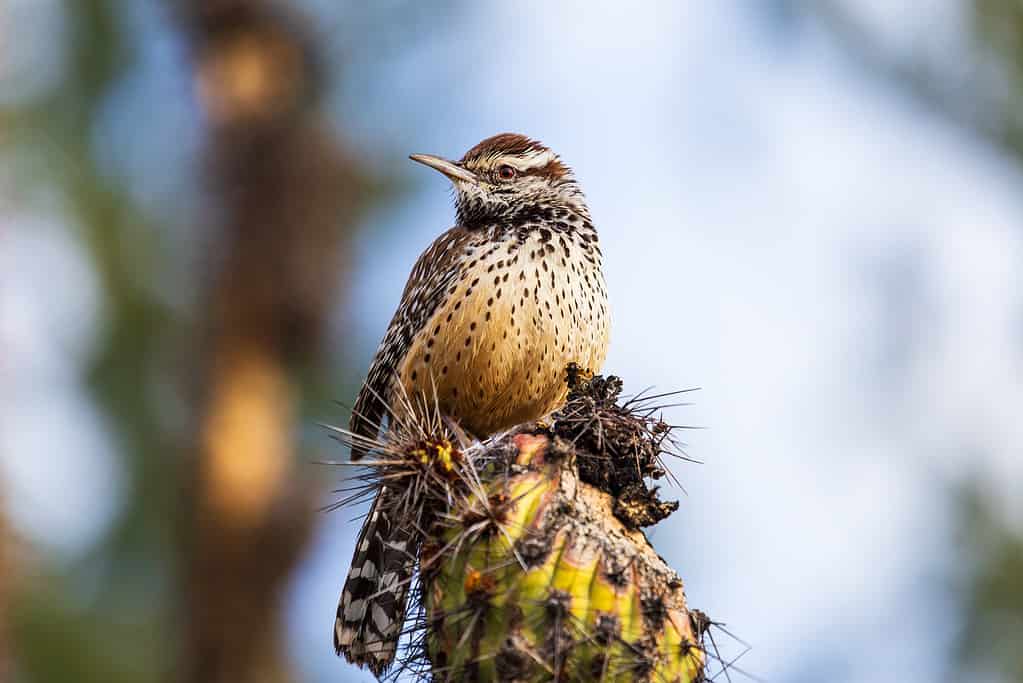
The cactus wren is the largest wren in the United States and is found across both the Southwestern U.S. and Mexico.
©mdesigner125/iStock via Getty Images
Arizona named the cactus wren its official state bird in 1973.
Arkansas: Northern Mockingbird Mimus polyglottos

The northern mockingbird’s scientific name means “many-tongued mimic.”
©Chris Klonowski/Shutterstock.com
Arkansas designated the northern mockingbird its official state bird in 1929.
California: California Quail Callipepla californica

The California quail’s head plume is black in males but brown in females.
©iStock.com/Banu R
California named the California quail as its official state bird in 1931.
Colorado: Lark Bunting Calamospiza melanocorys

During the breeding season, male lark buntings change into striking black and white plumage; nonbreeding males and females are mostly brown.
©iStock.com/Nancy Strohm
Colorado named the lark bunting as its official state bird in 1931.
Connecticut: American Robin Turdus migratorius
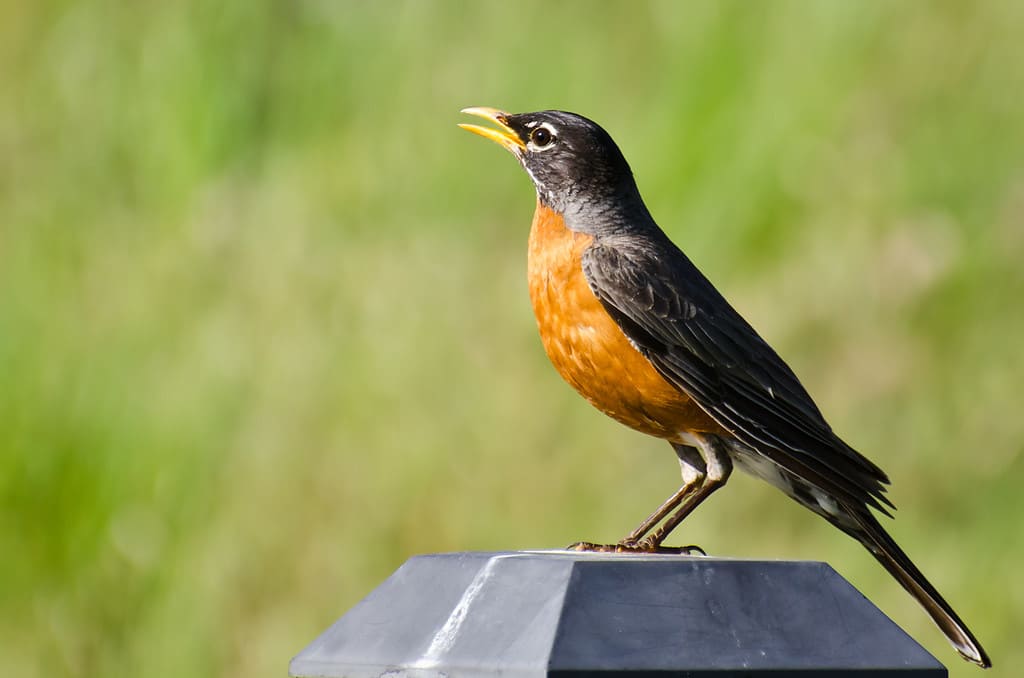
Europeans named the
American robin
after their native European robin (
Erithacus rubecula) because of the similar color breast, but they are not closely related.
©RCKeller/iStock via Getty Images
Connecticut named the American robin as its official state bird in 1943.
Delaware: Delaware Blue Hen Gallus domesticus (strain)
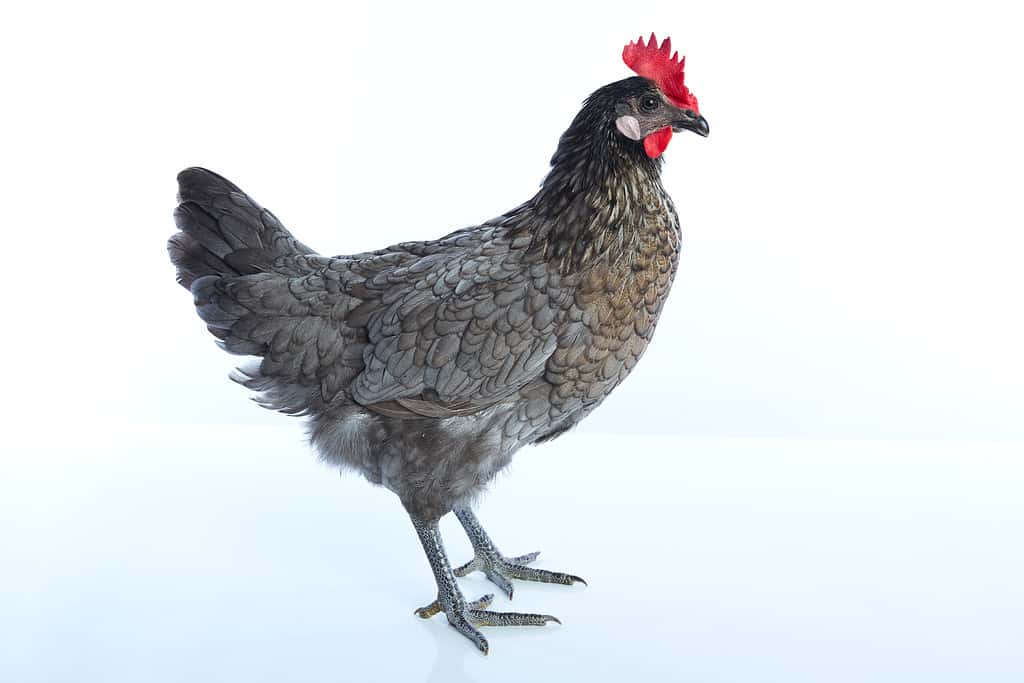
Unlike most of the other official state birds, the Delaware Blue Hen is not a wild bird species; rather, it is just a blue-colored strain of the American Game, a domestic chicken breed.
©LUNAMARINA/iStock via Getty Images
Delaware named the Delaware Blue Hen as its official state bird in 1939.
Florida: Northern Mockingbird Mimus polyglottos

It can be hard to tell a male and female mockingbird apart since they share the same colors.
©Chris Klonowski/Shutterstock.com
Florida named the northern mockingbird as its official state bird in 1927.
Georgia: Brown Thrasher Toxostoma rufum

Brown Thrashers are accomplished singers, with a repertoire of over 1,100 different song types.
©iStock.com/johnandersonphoto
Georgia named the brown thrasher as its official state bird in 1928.
State Game Bird: Bobwhite Quail (Colinus virginianus)

The bobwhite is so named for its characteristic “bob-WHITE” whistling call.
©iStock.com/twildlife
Georgia also designated the bobwhite quail as its official state game bird in 1970.
Hawaii: Hawaiian Goose (Nēnē) Branta sandvicensis

Hawaii’s endemic nēnē was once on the brink of extinction, but thanks to extensive conservation efforts is making a return in Hawaii.
©Wunson/Shutterstock.com
Hawaii named the Hawaiian Goose, aka the Nēnē, as its official state bird in 1957.
Idaho: Mountain Bluebird Sialia currucoides
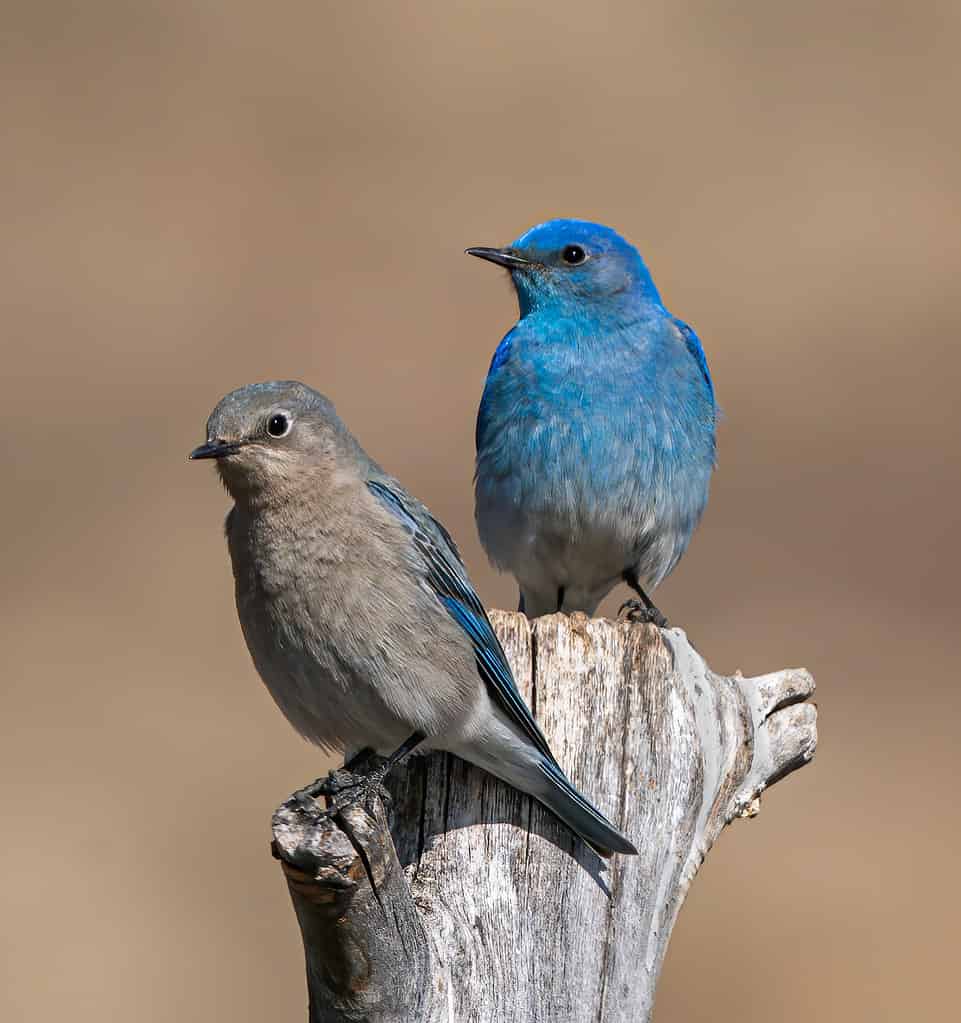
The
mountain bluebird
ranges across mountainous regions of Western North America.
©Richard Seeley/Shutterstock.com
Idaho named the mountain bluebird as its official state bird in 1931.
State Raptor: Peregrine Falcon (Falco peregrinus)

With the incredible vertical flight velocity of 242 mph, the
peregrine falcon
is the overall fastest animal in the world.
©Harry Collins Photography/Shutterstock.com
Idaho also made the peregrine falcon its official state raptor in 2004.
Illinois: Northern Cardinal Cardinalis cardinalis

Both female and male northern cardinals sing, but the male is typically more vocal.
©Ami Parikh/Shutterstock.com
Illinois named the northern cardinal as its official state bird in 1929.
Indiana: Northern Cardinal Cardinalis cardinalis

While adult male and female northern cardinals are similar in size and shape, they are dramatically different in color.
©Bonnie Taylor Barry/Shutterstock.com
Indiana named the northern cardinal as its official state bird in 1933.
Iowa: Eastern Goldfinch (American Goldfinch) Spinus tristis
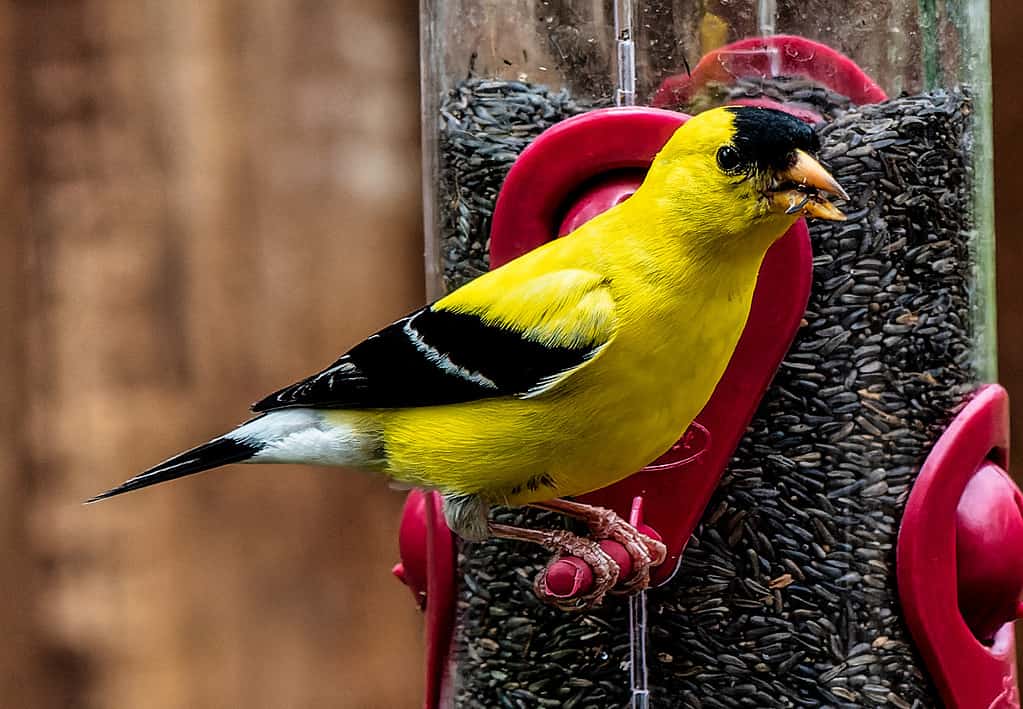
American goldfinches love both sunflower and nyjer seeds and are common backyard feeder birds.
©blightylad-infocus/iStock via Getty Images
Iowa named the “Eastern goldfinch,” aka American goldfinch, as its official state bird in 1933.
Kansas: Western Meadowlark Sturnella neglecta
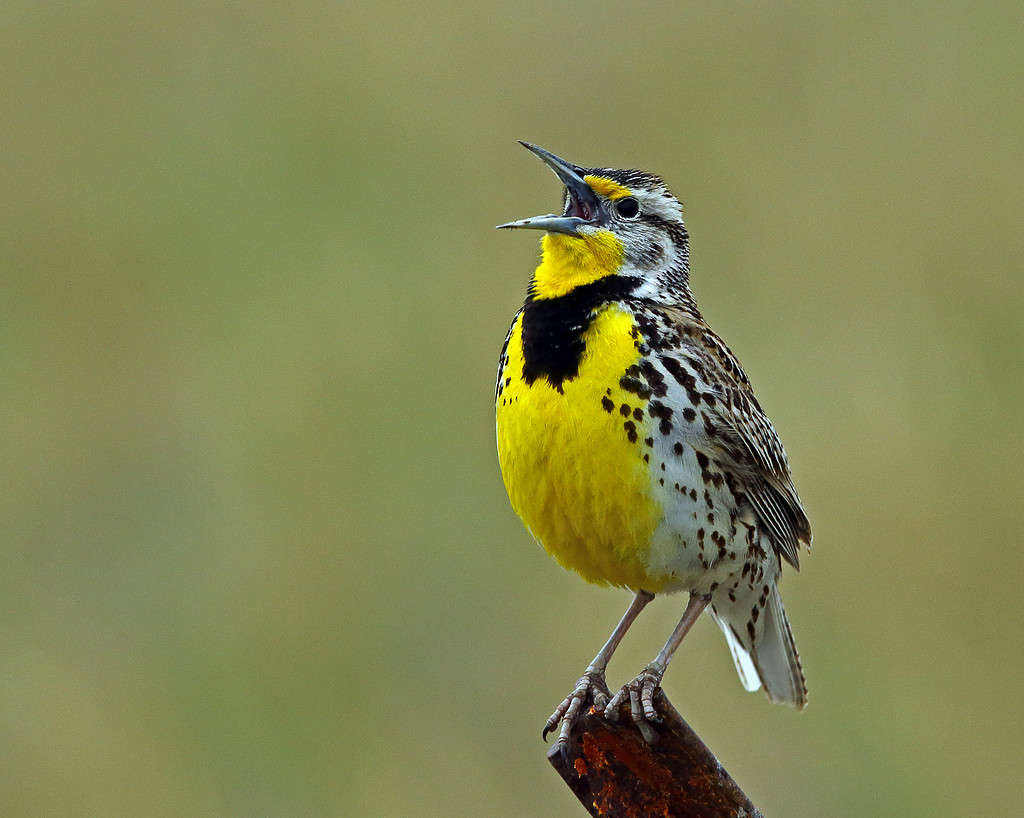
The western meadowlark has a flute-like warble that is easily recognizable from the simple whistle of its eastern meadowlark cousin.
©photographybyJHWilliams/iStock via Getty Images
Kansas named the western meadowlark as its official state bird in 1933.
Kentucky: Northern Cardinal Cardinalis cardinalis

Northern cardinals do not migrate, and so they are year-round residents across their range.
©iStock.com/Lynnae_Lowe
Kentucky named the northern cardinal as its official state bird in 1926.
Louisiana: Brown Pelican Pelecanus occidentalis
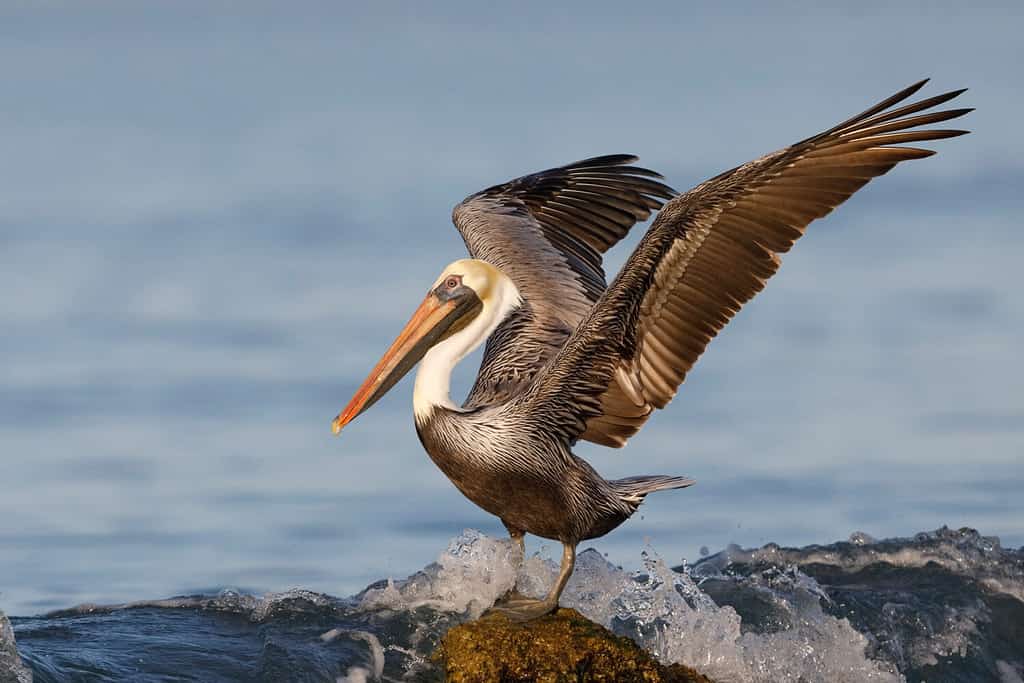
The brown
pelican
is also the national bird of Saint Martin, Barbados, Saint Kitts and Nevis, and the Turks and Caicos Islands.
©Brian Lasenby/Shutterstock.com
Louisiana named the brown pelican as its official state bird in 1966.
Maine: Chickadee (species not specified in state law); Black-Capped Chickadee Poecile atricapillus and Boreal Chickadee Poecile hudsonicus

The Black-capped
chickadee
and the boreal chickadee are just two of seven chickadee species, but they’re the only two who live in Maine.
©Carol Hamilton/iStock via Getty Images
Maine named the “chickadee” as its official state bird in 1927. Since a species was never designated in the original legislation (and recent efforts to specify one failed), two native species share this honor: the black-capped chickadee and the boreal chickadee.
Maryland: Baltimore Oriole Icterus galbula

Baltimore orioles eat a combination of fruit and nectar coupled with plenty of insects.
©Danita Delimont/Shutterstock.com
Maryland named the Baltimore oriole as its official state bird in 1947.
Massachusetts: Black-Capped Chickadee Poecile atricapilla

Adult male and female black-capped chickadees are identically plumaged.
©Steve Byland/Shutterstock.com
Massachusetts named the black-capped chickadee as its official state bird in 1941. (Unlike Maine, they also made sure to specify the species.)
State Game Bird: Wild Turkey (Meleagris gallopavo)
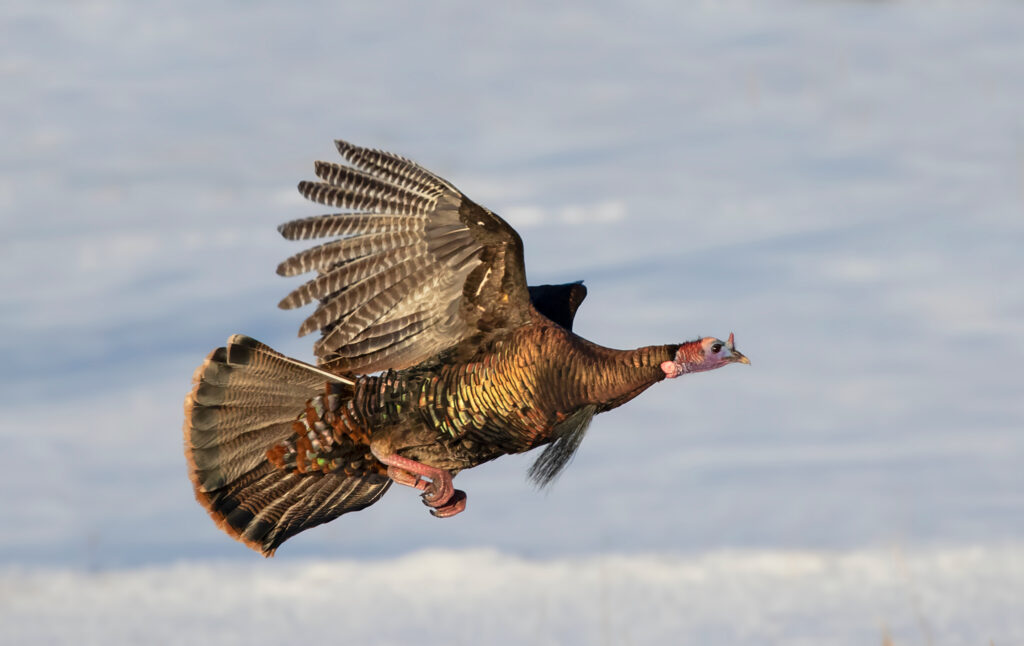
Wild turkeys were first domesticated by Indigenous peoples of the Americas centuries before Europeans arrived.
©Jim Cumming/Shutterstock.com
Massachusetts also designated the wild turkey the official state game bird in 1991.
Michigan: American Robin Turdus migratorius
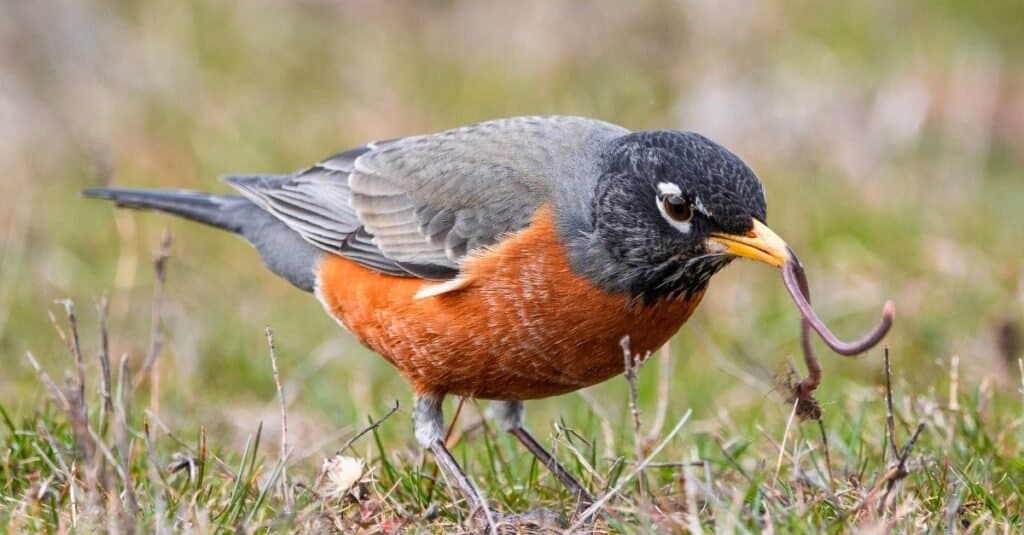
American robins are found across North America and are often seen eating worms and grubs on lawns.
©iStock.com/Mason Maron
Michigan named the American robin as its official state bird in 1931.
Minnesota: Common Loon Gavia immer

Common loon
chicks can often be seen riding on a parent’s back!
©Brian Lasenby/Shutterstock.com
Minnesota named the common loon as its official state bird in 1961.
Mississippi: Northern Mockingbird Mimus polyglottos
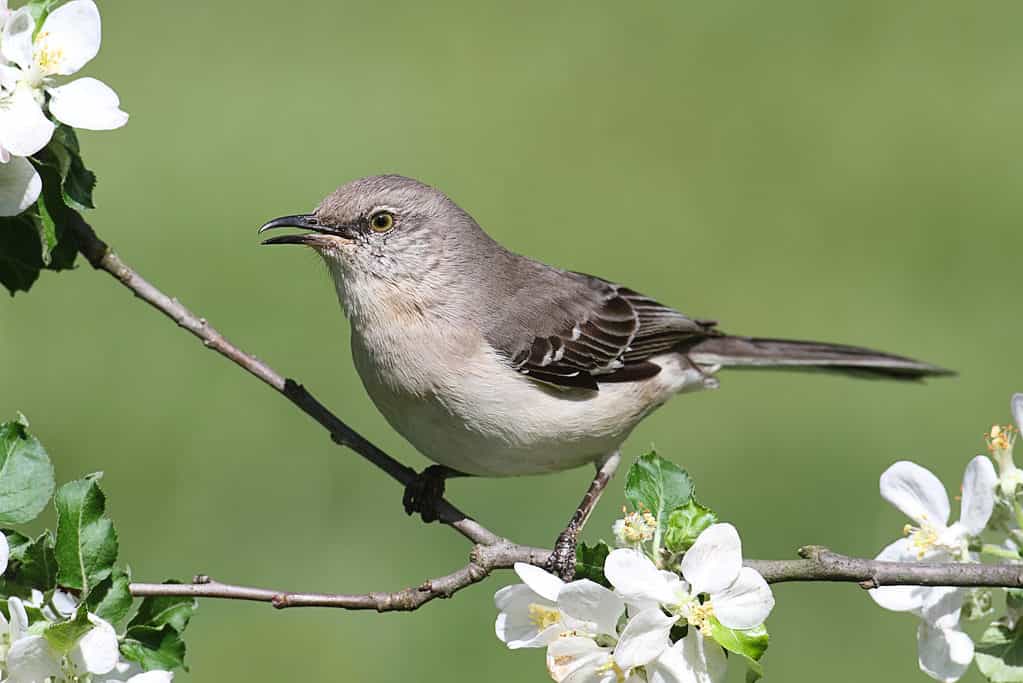
Northern mockingbirds are prolific breeders, actively nesting from early spring to later summer and raising 2 to 3 broods per season.
©Steve Byland/Shutterstock.com
Mississippi named the northern mockingbird as its official state bird in 1944.
State Waterfowl: Wood Duck (Aix sponsa)
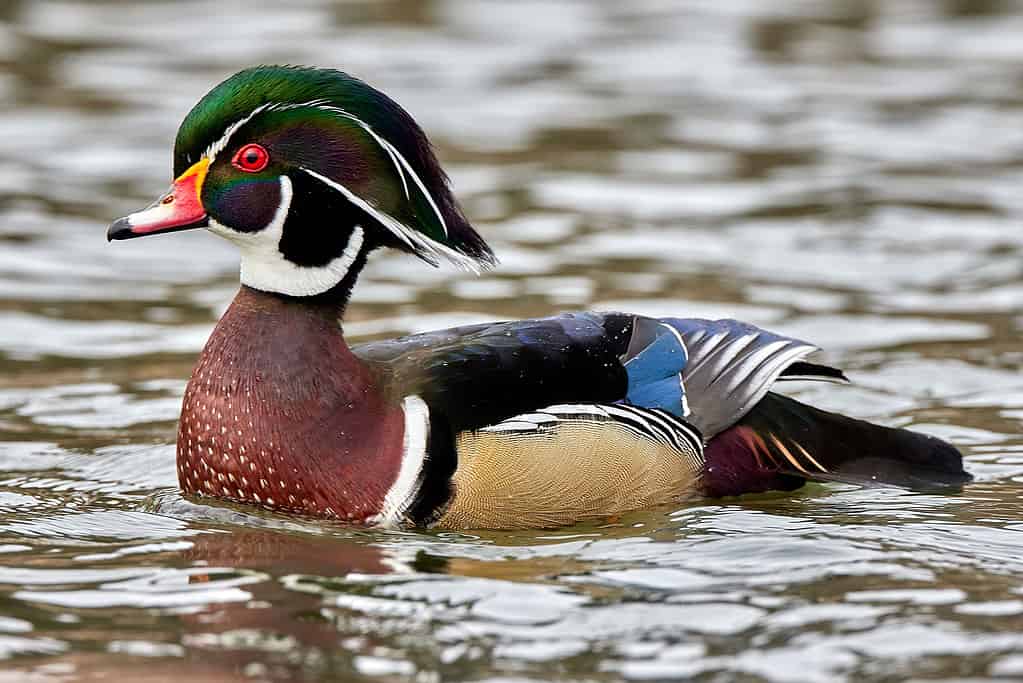
The wood duck is most closely related to the Mandarin duck (
Aix galericulata) from East Asia.
©Wirestock/iStock via Getty Images
Mississippi also designated the Wood Duck Aix sponsa as its official state waterfowl in 1974.
Missouri: Eastern Bluebird Sialia sialis
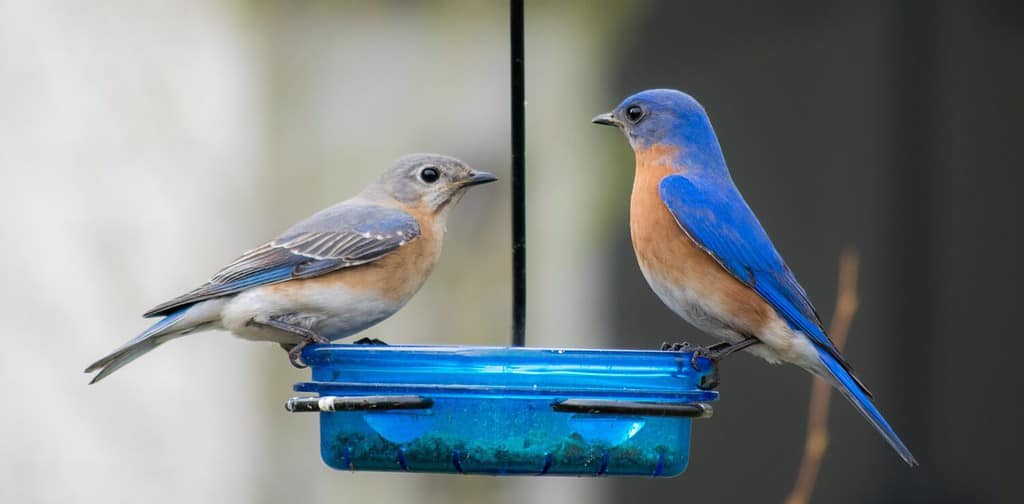
Mealworm feeders are a great way to attract eastern bluebirds to your yard.
©J Zdunczyk/Shutterstock.com
Missouri named the eastern bluebird its official state bird in 1927.
State Game Bird: Bobwhite Quail (Colinus virginianus)

The bobwhite quail is also known as the northern bobwhite and the Virginia quail.
©iStock.com/twildlife
Missouri also designated the bobwhite quail as its official state game bird in 2007.
Montana: Western Meadowlark Sturnella neglecta

Western Meadowlarks are primarily insectivores but also eat seeds and berries.
©photographybyJHWilliams/iStock via Getty Images
Montana named the western meadowlark as its official state bird in 1941.
Nebraska: Western Meadowlark Sturnella neglecta
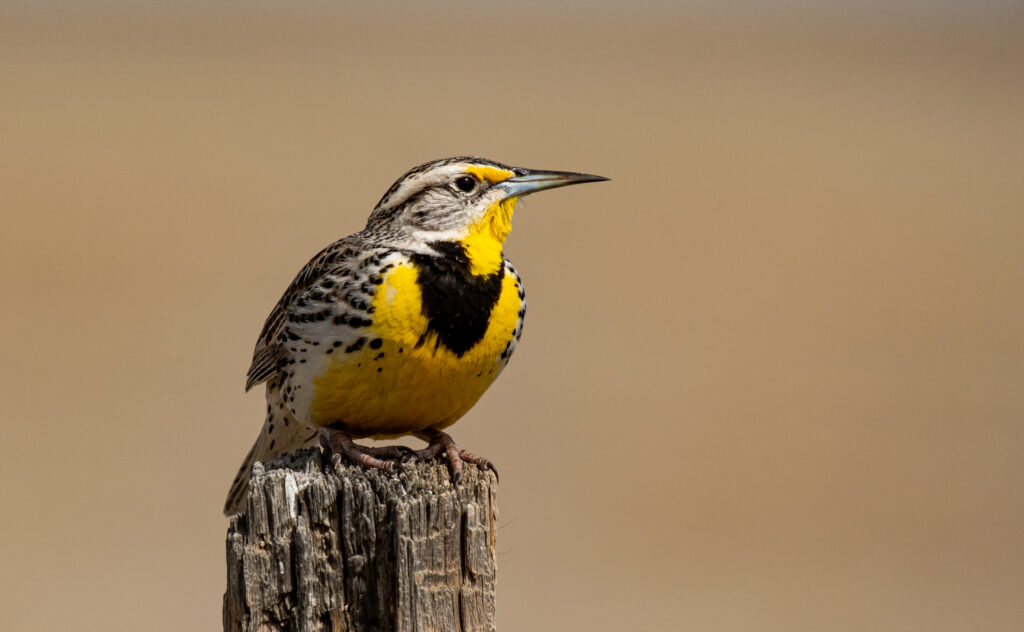
Western and eastern meadowlarks may occasionally hybridize where their ranges overlap.
©Kerry Hargrove/Shutterstock.com
Nebraska named the western meadowlark as its official state bird in 1929.
Nevada: Mountain Bluebird Sialia currucoides
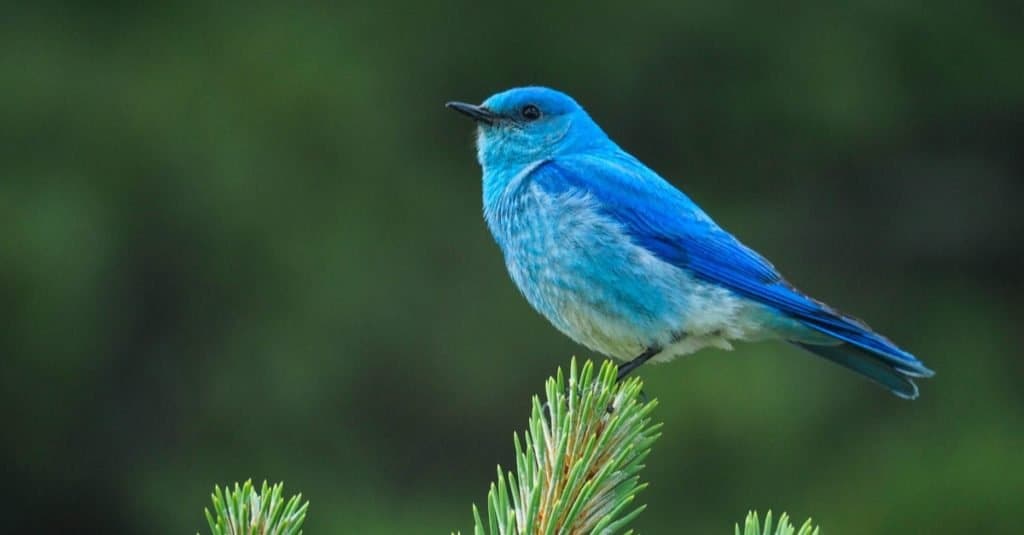
Like other bluebird species, adult males have brighter blue plumage than females.
©MTKhaled mahmud/Shutterstock.com
Nevada named the mountain bluebird its official state bird in 1967.
New Hampshire: Purple Finch Carpodacus purpureus

Purple finches are really more of a raspberry red, and only adult males display this coloration.
©Steve Byland/Shutterstock.com
New Hampshire named the purple finch as its official state bird in 1957.
State Raptor: Red-tailed Hawk (Buteo jamaicensis)
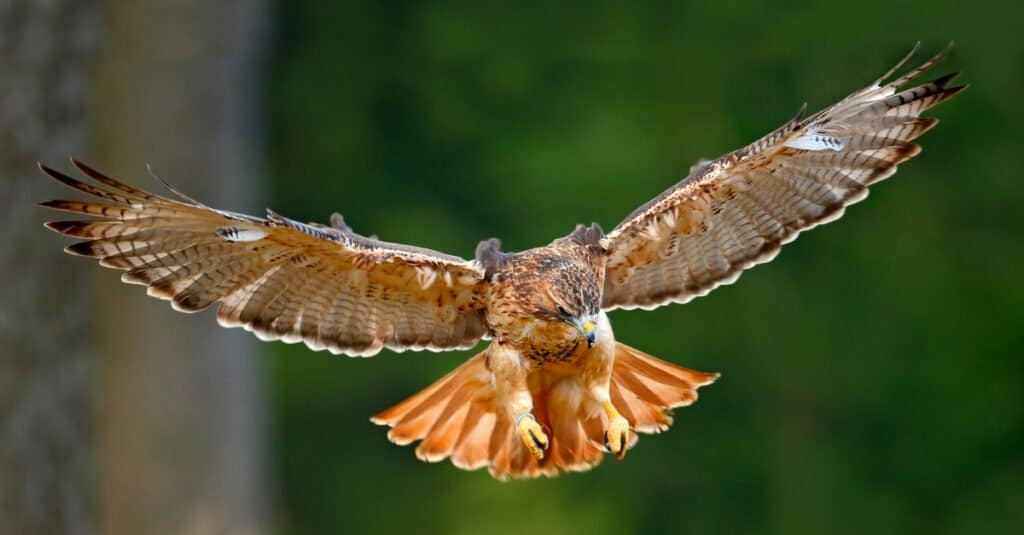
Red-tailed hawks are one of the most common hawk species across a wide expanse of North America.
©Ondrej Prosicky/Shutterstock.com
New Hampshire also designated the red-tailed hawk its official state raptor in 2019.
New Jersey: Eastern Goldfinch (American Goldfinch) Spinus tristis
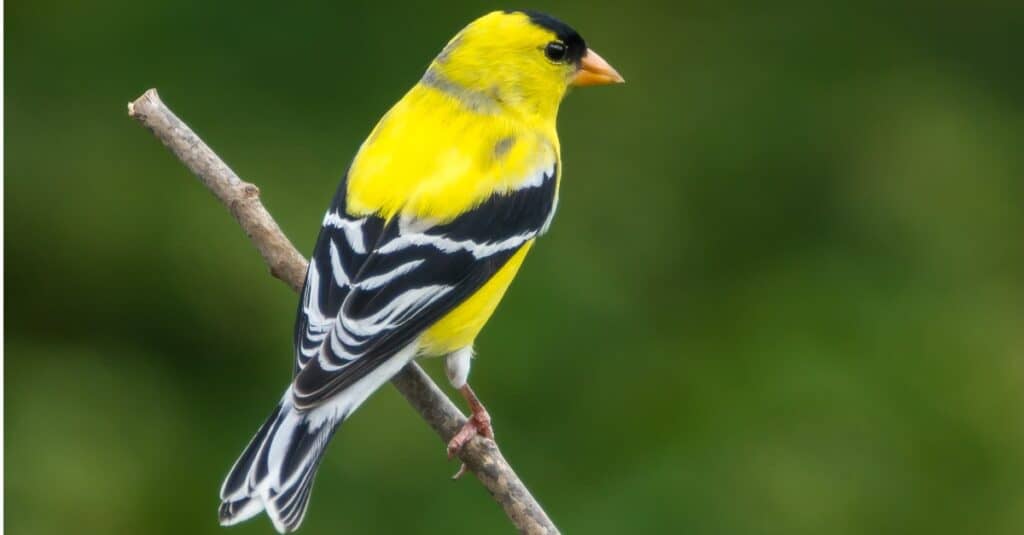
The American goldfinch averages around five inches in length.
©iStock.com/impr2003
New Jersey designated the “eastern goldfinch,” aka the American goldfinch, as its official state bird in 1935.
New Mexico: Greater Roadrunner Geococcyx californianus
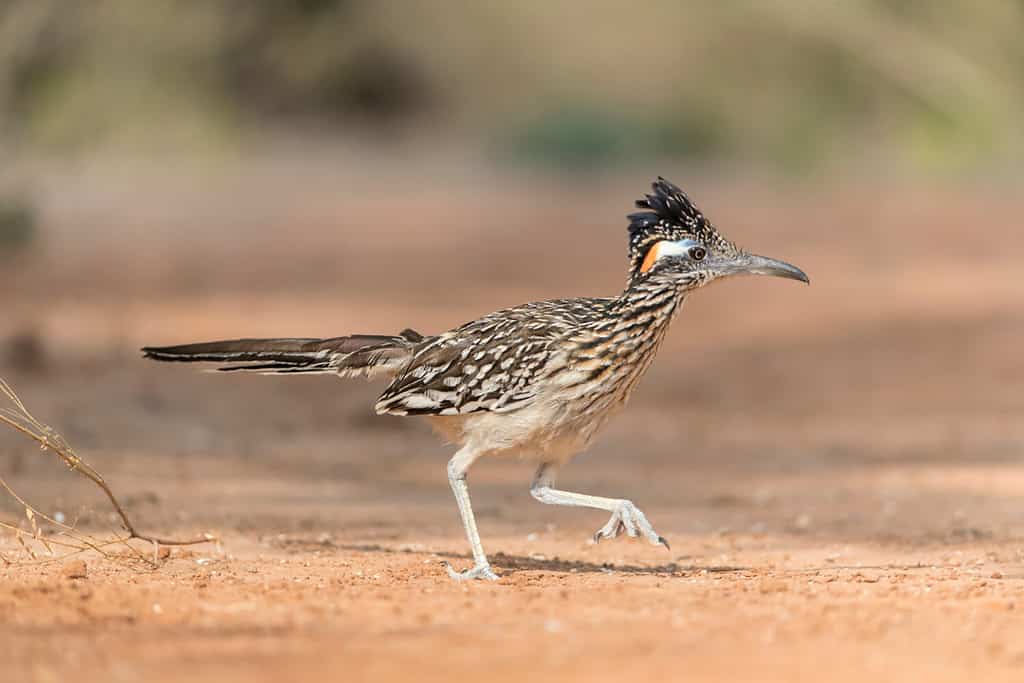
Roadrunners are members of the cuckoo family.
©Dennis W Donohue/Shutterstock.com
New Mexico named the greater roadrunner as its official state bird in 1949.
New York: Eastern Bluebird Sialia sialis

Male eastern bluebirds sport richer blue and orange colors than females.
©J Zdunczyk/Shutterstock.com
New York named the eastern bluebird as its official state bird in 1970.
North Carolina: Northern Cardinal Cardinalis cardinalis
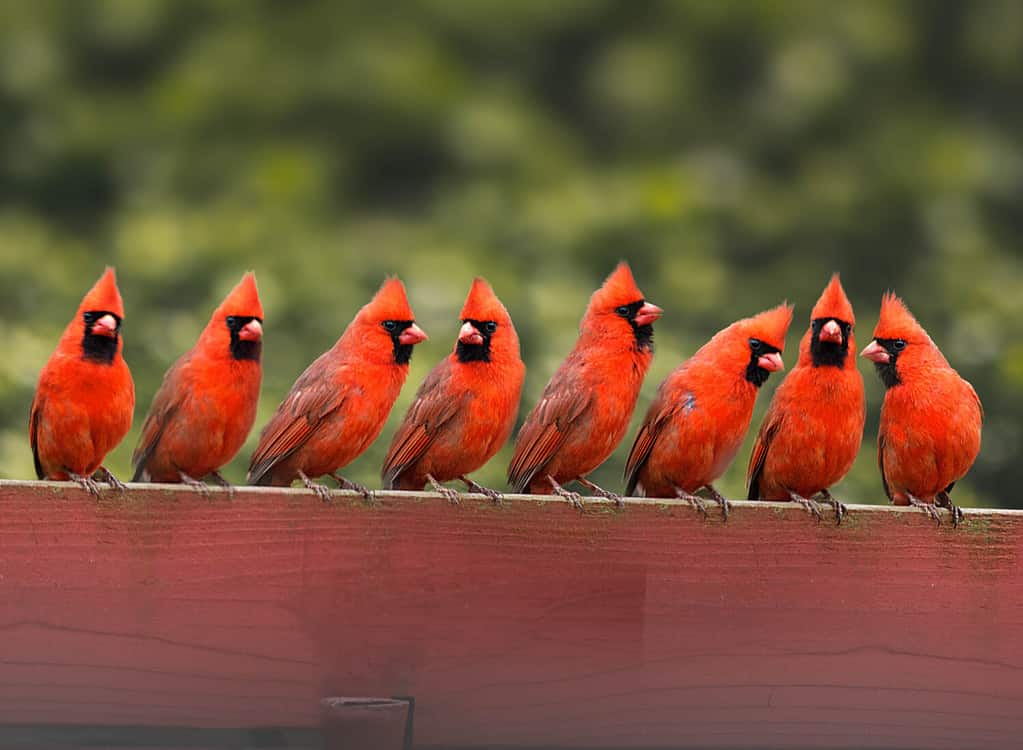
Northern cardinals love both sunflower and safflower seeds, which they can easily crack open with their strong beaks.
©Rizwan Mian/Shutterstock.com
North Carolina named the northern cardinal as its official state bird in 1943.
North Dakota: Western Meadowlark Sturnella neglecta

The western meadowlark is polygynous, with a single male usually having two mates simultaneously during the breeding season.
©iStock.com/Gary Gray
North Dakota named the western meadowlark as its official state bird in 1970.
Ohio: Northern Cardinal Cardinalis cardinalis

As part of the northern cardinal’s courtship ritual, the male feeds seeds to the female beak-to-beak.
©Rob Palmer Photography/Shutterstock.com
Ohio named the northern cardinal as its official state bird in 1933.
Oklahoma: Scissor-Tailed Flycatcher Tyrannus forficatus
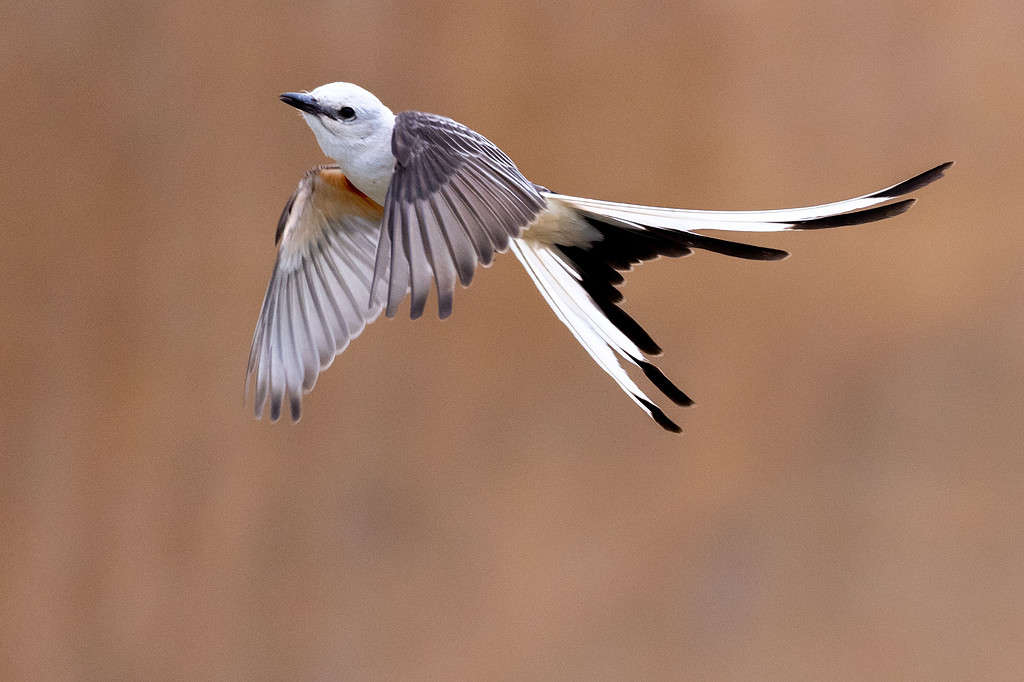
A beloved state bird, the scissor-tailed flycatcher also appears on Oklahoma’s official 2008 state commemorative quarter.
©Wirestock/iStock via Getty Images
Oklahoma named the scissor-tailed flycatcher as its official state bird in 1951.
State Game Bird: Wild Turkey (Meleagris gallopavo)
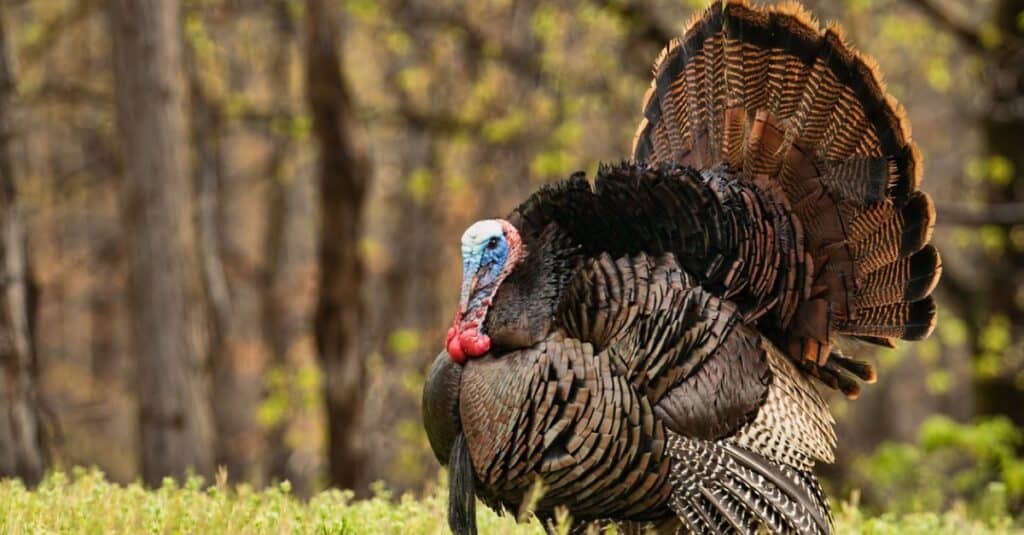
Wild turkeys have over 5,000 feathers as adults.
©iStock.com/Jens_Lambert_Photography
Oklahoma also designated the wild turkey its official state game bird in 1990.
Oregon: Western Meadowlark Sturnella neglecta (state songbird)

Western Meadowlarks are both ground feeders and ground nesters.
©photographybyJHWilliams/iStock via Getty Images
Oregon originally proclaimed the western meadowlark as its official state bird in 1927. In 2017, this designation was retitled to official state songbird.
State Raptor: Osprey (Pandion haliaetus)

The osprey is an expert fisher.
©Wang LiQiang/Shutterstock.com
Oregon also designated the osprey its official state raptor in 2017.
Pennsylvania: Ruffed grouse Bonasa umbellus (state game bird)
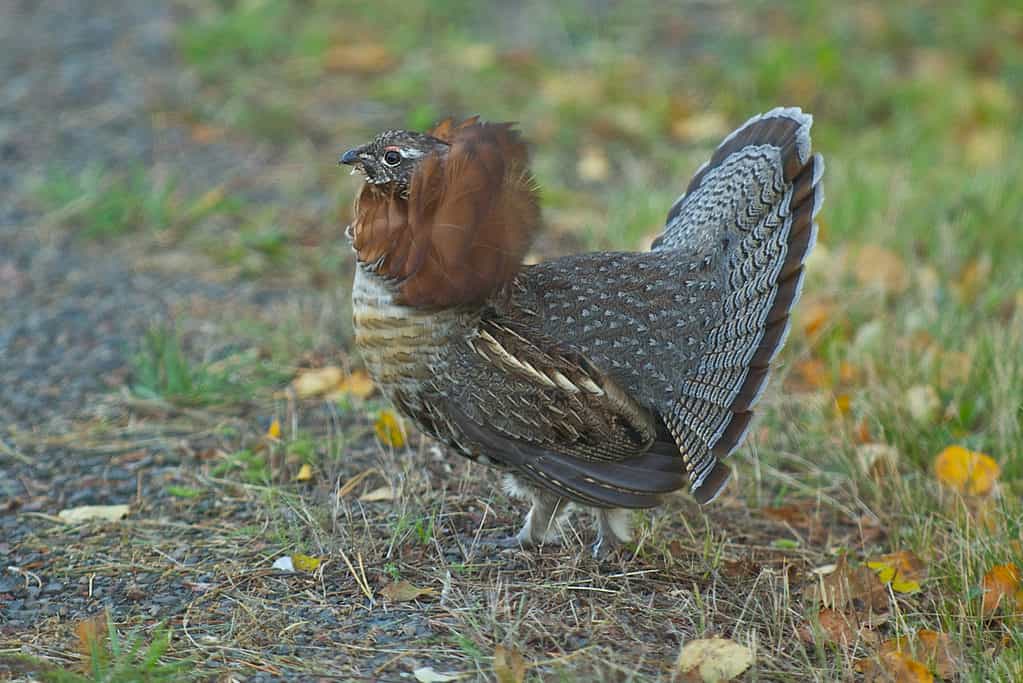
The “air drumming” of the male ruffed grouse’s courtship display can be heard a quarter mile away!
©iStock.com/tmarko
Pennsylvania named the ruffed grouse as its official state game bird in 1931. While the state has never officially designated just an official “state bird,” the ruffed grouse is considered the de facto official state bird by Pennsylvanians and is referred to as such on the official Commonwealth of PA State Symbols page.
Rhode Island: Rhode Island Red Gallus domesticus (breed)
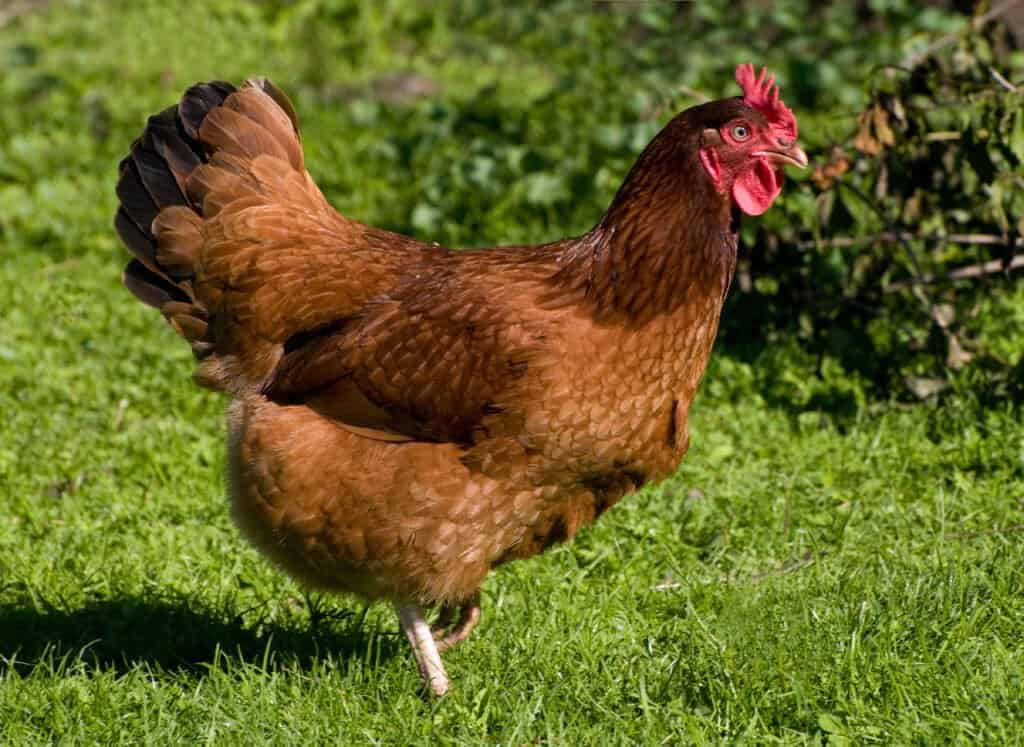
Like Delaware, Rhode Island chose a domestic chicken rather than a wild bird as its official state bird.
©Ariene Studio/Shutterstock.com
Rhode Island named the Rhode Island Red as its official state bird in 1954.
South Carolina: Carolina Wren Thryothorus ludovicianus
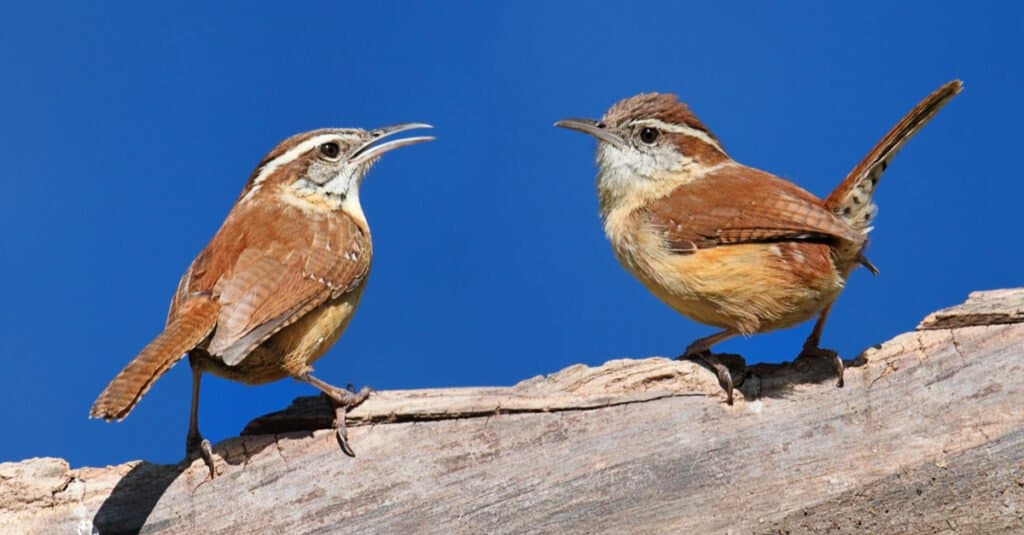
Carolina wrens form lifelong pair bonds.
©Steve Byland/Shutterstock.com
South Carolina named the Carolina wren as its official state bird in 1948. It took the place of the northern mockingbird, which was previously designated in 1939.
State Game Bird: Wild Turkey (Meleagris gallopavo)

Wild turkeys are most at home in mature forests with lots of nut trees.
©iStock.com/Robert Winkler
South Carolina also designated the wild turkey (Meleagris gallopavo) its official state wild game bird in 1976.
State Duck: Wood Duck (Aix sponsa)

The male wood duck’s breeding plumage is one of the most stunning of all the North American ducks.
©Wirestock/iStock via Getty Images
South Carolina became the only state with three official birds after naming the wood duck its official state duck in 2009.
South Dakota: Ring-Necked Pheasant Phasianus colchicus
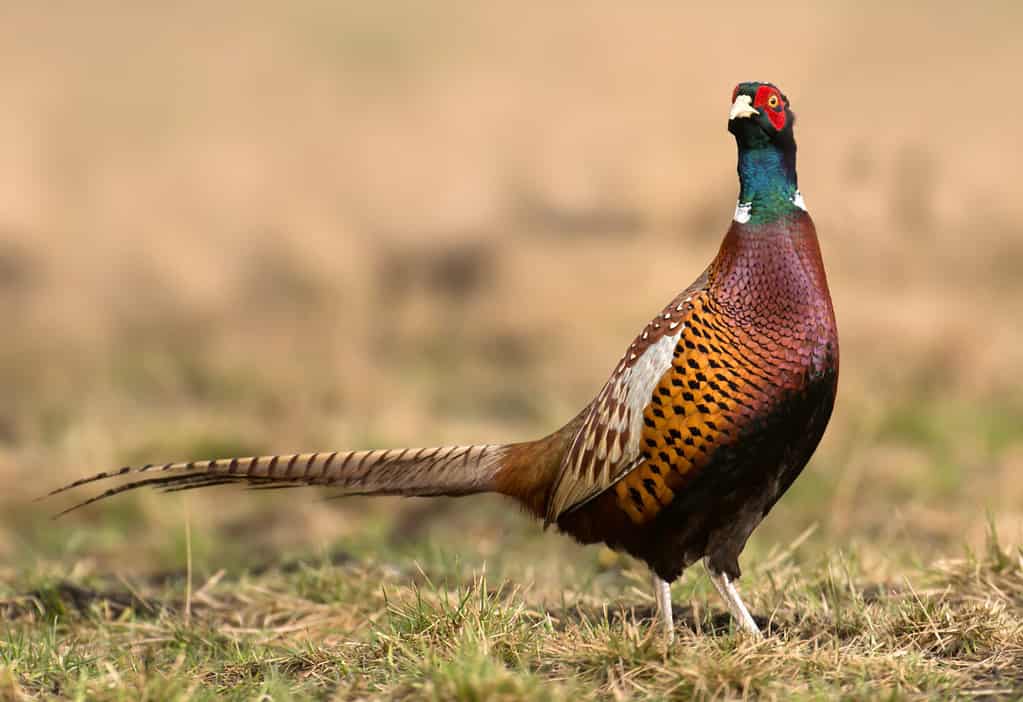
Ring-necked pheasants are native to Asia but have been widely introduced as a game bird across both Europe and the United States.
©Piotr Krzeslak/Shutterstock.com
South Dakota named the ring-necked pheasant as its official state bird in 1943.
Tennessee: Northern Mockingbird Mimus polyglottos

Northern mockingbird pairs work together to build nests, with the male building the outer foundation and the female finishing the inner lining.
©Chris Klonowski/Shutterstock.com
Tennessee named the northern mockingbird as its official state bird in 1933.
State Game Bird: Bobwhite Quail (Colinus virginianus)

Bobwhite quail nests average about a dozen eggs a clutch, but they can lay as many as 28 eggs at a time!
©iStock.com/twildlife
Tennessee also designated the bobwhite quail its official state wild game bird in 1987.
Texas: Northern Mockingbird Mimus polyglottos

Northern mockingbirds will regularly attack much larger predators who threaten their nests and chicks, including swooping at humans who get too close!
©Chris Klonowski/Shutterstock.com
Texas named the northern mockingbird as its official state bird in 1927.
Utah: Sea Gull (California Gull) Larus californicus

The California gull is credited with saving Mormon settlers from the Mormon cricket plague of 1848 that threatened to destroy their crops when the birds arrived for their breeding season and feasted on the pests.
©Ken Hoehn/iStock via Getty Images
Utah named the “seagull,” now recognized as the California gull, as its official state bird in 1955.
Vermont: Hermit Thrush Catharus guttatus
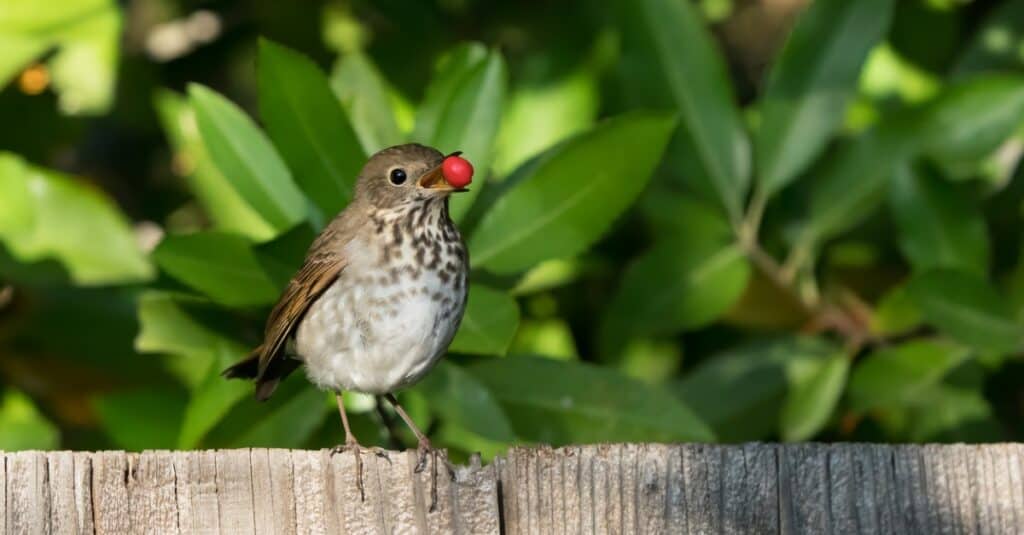
Hermit thrushes are usually ground nesters east of the Rocky Mountains but tree nesters to the west.
©iStock.com/Wendy/Jeff Sparks/Torquemada
Vermont named the hermit thrush as its official state bird in 1941.
Virginia: Northern Cardinal Cardinalis cardinalis
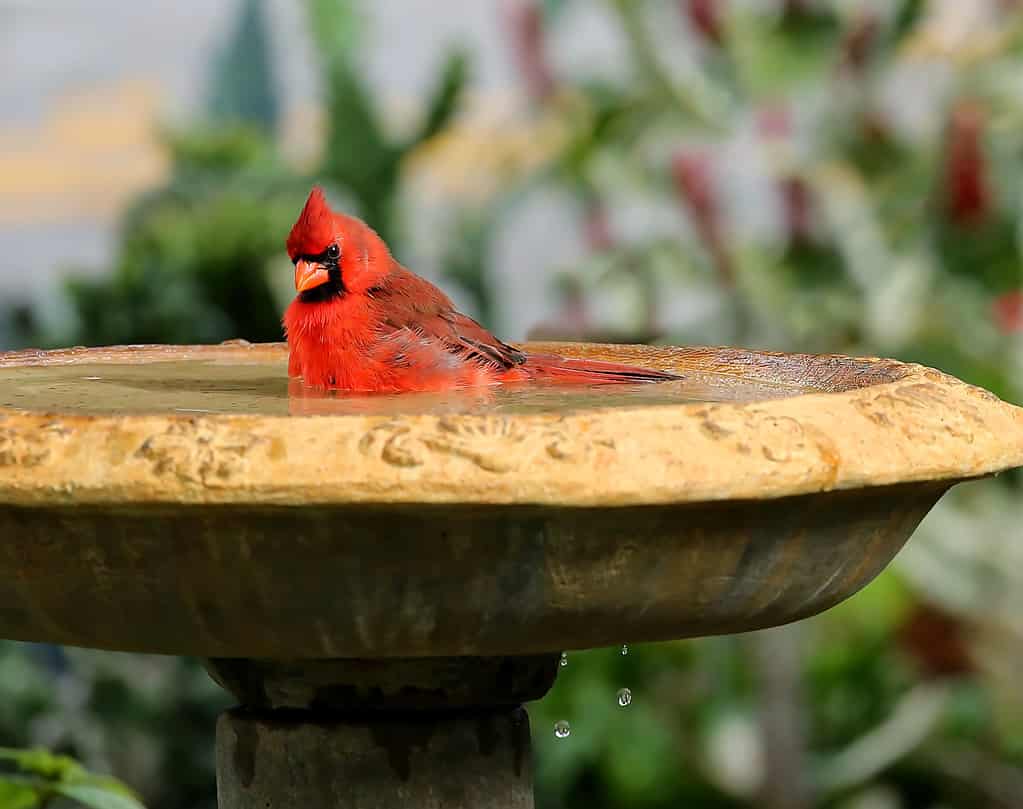
Unusual for songbirds, both male and female northern cardinals sing and even sing duets together!
©JillianCain/iStock via Getty Images
Virginia named the northern cardinal as its official state bird in 1950.
Washington: Willow Goldfinch (American Goldfinch) Spinus tristis
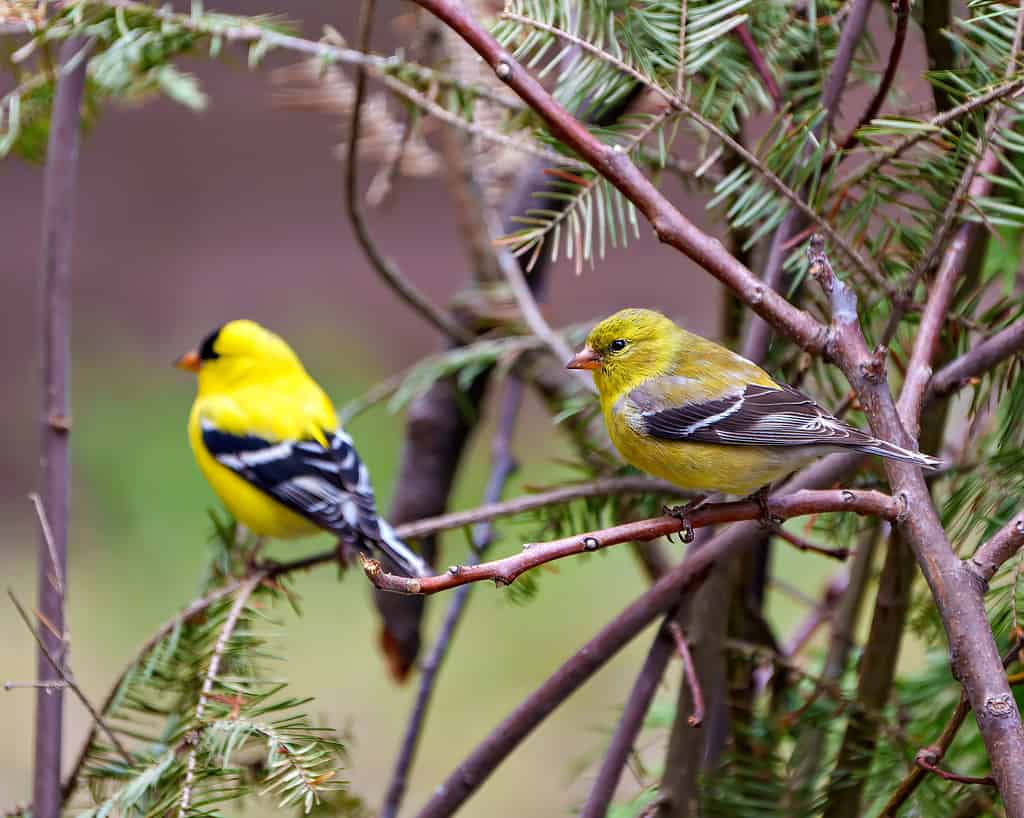
American goldfinches can often be found in mixed flocks with both pine siskins and common redpolls.
©Rejean Bedard/iStock via Getty Images
Washington named the “willow goldfinch,” aka the American goldfinch, as its official state bird in 1951.
West Virginia: Northern Cardinal Cardinalis cardinalis
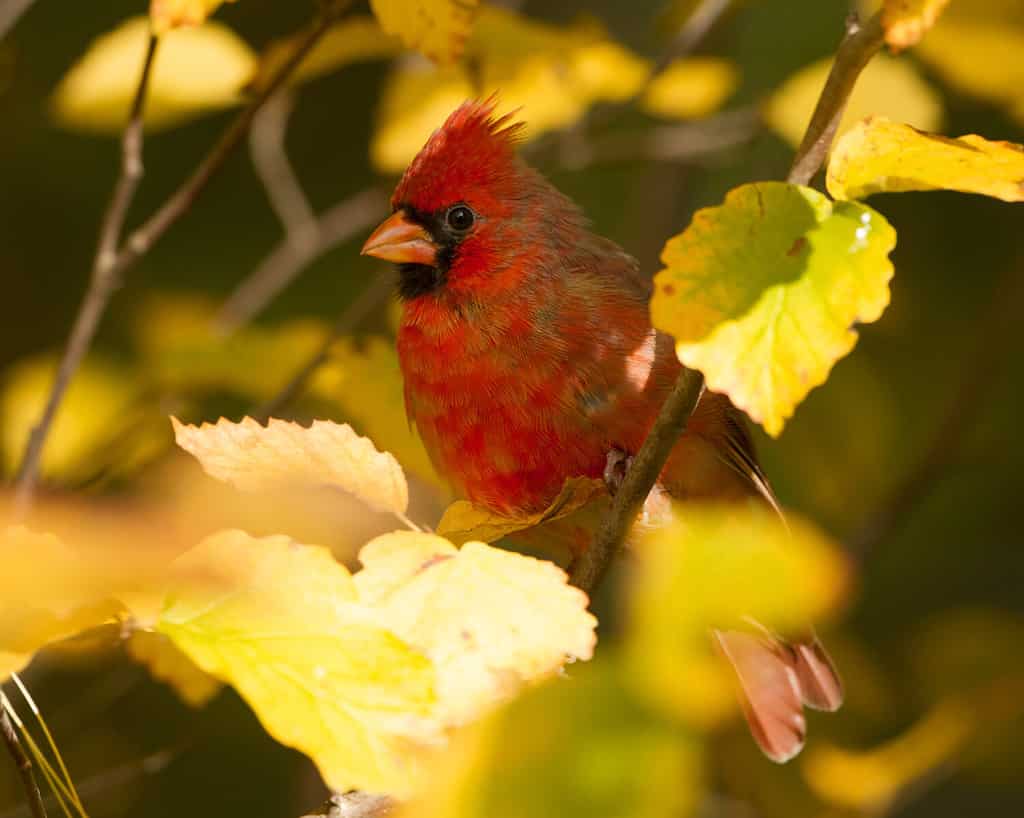
The northern cardinal is also known colloquially as the cardinal, common cardinal, red cardinal, and redbird.
©Brian Lasenby/Shutterstock.com
West Virginia named the northern cardinal as its official state bird in 1949.
Wisconsin: American Robin Turdus migratorius

American robins are often associated with the coming of spring, but in many areas, they are year-round residents.
©RCKeller/iStock via Getty Images
Wisconsin named the American robin as its official state bird in 1949.
State Symbol of Peace: Eastern Mourning Dove (Zenaida macroura carolinensis)

Mourning doves are often seen in pairs.
©Bonnie Taylor Barry/Shutterstock.com
Wisconsin also designated the eastern mourning dove its official state symbol of peace in 1971.
Wyoming: Western Meadowlark Sturnella neglecta

Only breeding adults have both the bright yellow underparts and black V on the chest.
©photographybyJHWilliams/iStock via Getty Images
Wyoming named the western meadowlark as its official state bird in 1927.
Washington, District of Columbia’s Official Bird: Wood Thrush Hylocichla mustelina
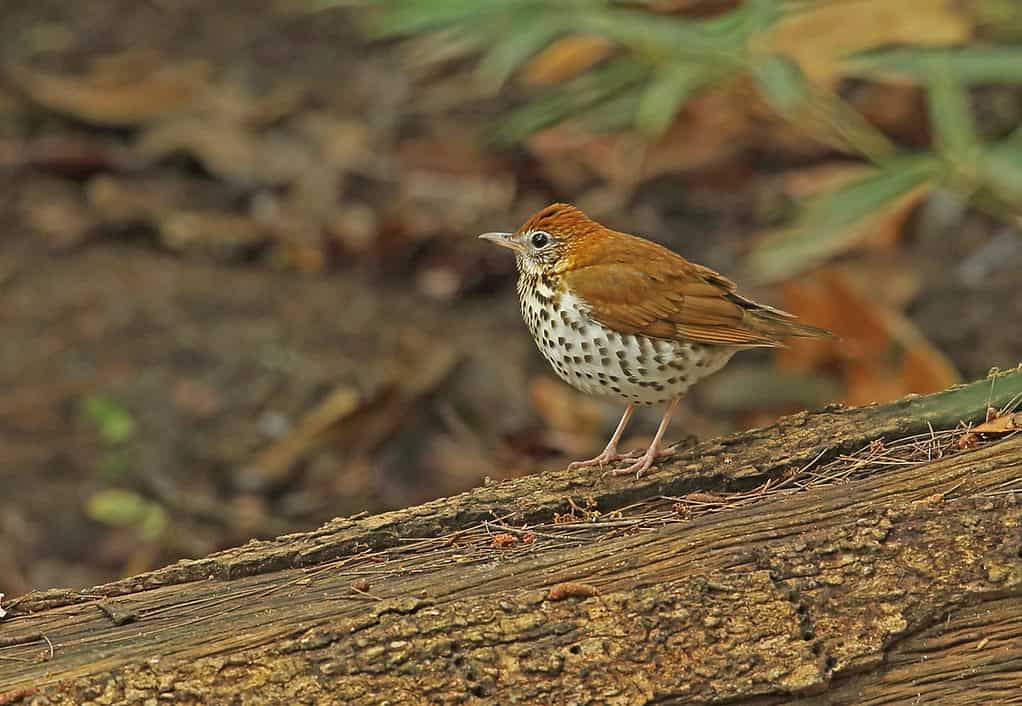
The wood thrush’s complex songs include pairs of notes sung simultaneously.
©iStock.com/Neil bowman
Washington, D.C., designated the wood thrush as its official bird in 1938.
Official Birds of U.S. Territories
American Samoa: None
American Samoa has not yet named an official bird.
Northern Mariana Islands: Mariana Fruit Dove (Mwee’mwe) Ptilinopus roseicapilla

The Mariana fruit dove is the only bird on the list with both pink and purple feathers!
©DickDaniels (http://theworldbirds.org/) / CC BY-SA 3.0 – License
The Northern Mariana Islands claims the Mariana fruit dove as its official bird.
Guam: Guam Rail (Ko’ko’) Gallirallus owstoni
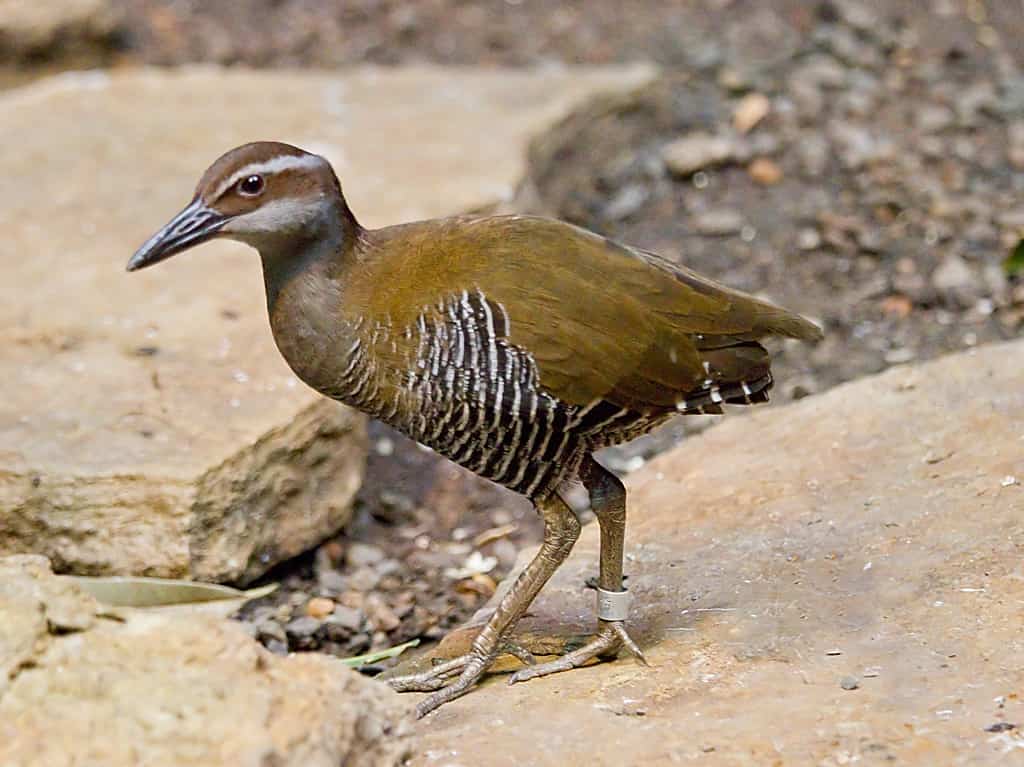
Guam’s endemic ko’ko’ was declared extinct in the wild in the 1980s, but ongoing captive breeding and reintroduction efforts have resulted in it being relisted as a critically endangered species.
©Greg Hume / CC BY-SA 3.0 – License
Guam named the Guam rail (ko’ko’) as its official bird in 2000.
Puerto Rico: None
Puerto Rico has not yet named an official bird.
U.S Virgin Islands: Bananaquit Coereba flaveola
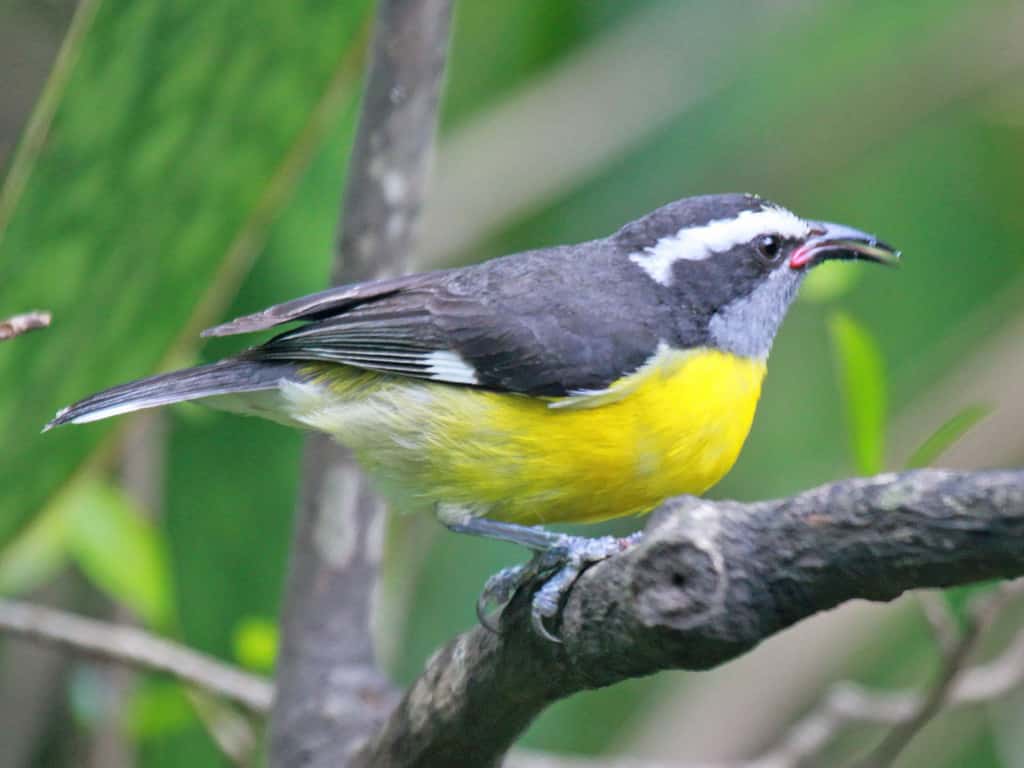
The Bananaquit is a small nectarivore found across the Neotropics with bright yellow underparts.
©DickDaniels (http://theworldbirds.org/) / CC BY-SA 3.0 – License
The U.S. Virgin Islands named the bananaquit its official bird in 1970.
National Bird of the United States: Bald Eagle Haliaeetus leucocephalus
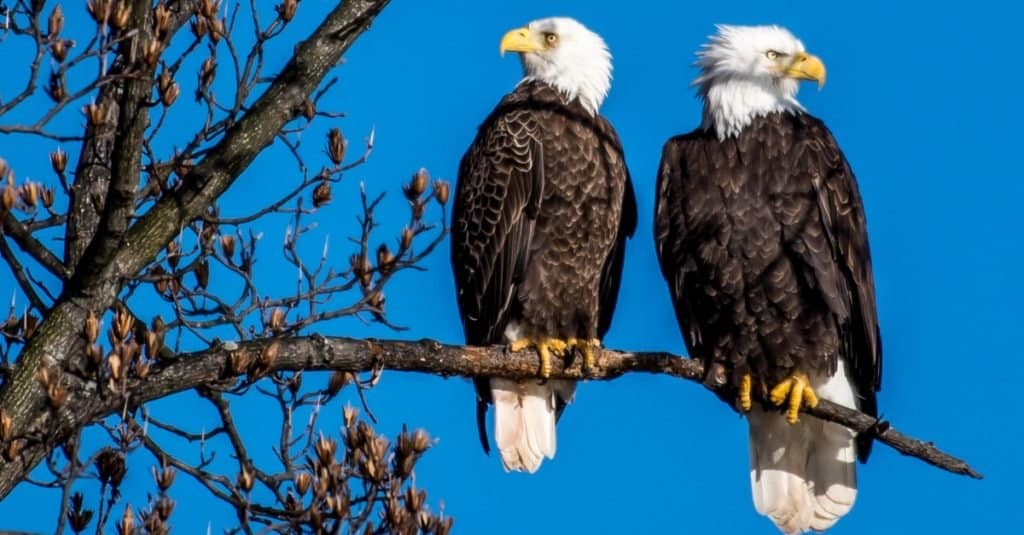
Like most birds of prey, female bald eagles are a bit bigger and heavier than males.
©Krumpelman Photography/Shutterstock.com
Last but certainly not least, the United States also has a national bird, the bald eagle, adopted in 1782.
Summary of The Complete List of All 50 Official US State Birds (Including Washington, D.C. and U.S. Territories)
| State/Territory | Common Name | Scientific Name | Year Designated |
|---|---|---|---|
| Alabama | Yellowhammer (Northern Flicker) | Colaptes auratus | 1927 |
| Alaska | Willow Ptarmigan | Lagopus lagopus | 1955 |
| Arizona | Cactus Wren | Campylorhynchus brunneicapillus | 1973 |
| Arkansas | Northern Mockingbird | Mimus polyglottos | 1929 |
| California | California Quail | Callipepla californica | 1931 |
| Colorado | Lark Bunting | Calamospiza melanocorys | 1931 |
| Connecticut | American Robin | Turdus migratorius | 1943 |
| Delaware | Delaware Blue Hen | Gallus domesticus breed | 1939 |
| Florida | Northern Mockingbird | Mimus polyglottos | 1927 |
| Georgia | Brown Thrasher | Toxostoma rufum | 1928 |
| Hawaii | Hawaiian Goose (Nēnē) | Branta sandvicensis | 1957 |
| Idaho | Mountain Bluebird | Sialia currucoides | 1931 |
| Illinois | Northern Cardinal | Cardinalis cardinalis | 1929 |
| Indiana | Northern Cardinal | Cardinalis cardinalis | 1933 |
| Iowa | Eastern Goldfinch (American Goldfinch) | Spinus tristis | 1933 |
| Kansas | Western Meadowlark | Sturnella neglecta | 1933 |
| Kentucky | Northern Cardinal | Cardinalis cardinalis | 1926 |
| Louisiana | Brown Pelican | Pelecanus occidentalis | 1966 |
| Maine | Chickadee (Black-Capped Chickadee, Boreal Chickadee) | Poecile atricapillus, Poecile hudsonicus | 1927 |
| Maryland | Baltimore Oriole | Icterus galbula | 1947 |
| Massachusetts | Black-Capped Chickadee | Poecile atricapillus | 1941 |
| Michigan | American Robin | Turdus migratorius | 1931 |
| Minnesota | Common Loon | Gavia immer | 1961 |
| Mississippi | Northern Mockingbird | Mimus polyglottos | 1944 |
| Missouri | Eastern Bluebird | Sialia sialis | 1927 |
| Montana | Western Meadowlark | Sturnella neglecta | 1941 |
| Nebraska | Western Meadowlark | Sturnella neglecta | 1929 |
| Nevada | Mountain Bluebird | Sialia currucoides | 1967 |
| New Hampshire | Purple Finch | Carpodacus purpureus | 1957 |
| New Jersey | Eastern Goldfinch (American Goldfinch) | Spinus tristis | 1935 |
| New Mexico | Greater Roadrunner | Geococcyx californianus | 1949 |
| New York | Eastern Bluebird | Sialia sialis | 1970 |
| North Carolina | Northern Cardinal | Cardinalis cardinalis | 1943 |
| North Dakota | Western Meadowlark | Sturnella neglecta | 1970 |
| Ohio | Northern Cardinal | Cardinalis cardinalis | 1933 |
| Oklahoma | Scissor-Tailed Flycatcher | Tyrannus forficatus | 1951 |
| Oregon | Western Meadowlark | Sturnella neglecta | 1927/2017 |
| Pennsylvania | Ruffed Grouse | Bonasa umbellus | 1931 |
| Rhode Island | Rhode Island Red | Gallus domesticus breed | 1954 |
| South Carolina | Carolina Wren | Thryothorus ludovicianus | 1948 |
| South Dakota | Ring-Necked Pheasant | Phasianus colchicus | 1943 |
| Tennessee | Northern Mockingbird | Mimus polyglottos | 1933 |
| Texas | Northern Mockingbird | Mimus polyglottos | 1927 |
| Utah | Sea Gull (California Gull) | Larus californicus | 1955 |
| Vermont | Hermit Thrush | Catharus guttatus | 1941 |
| Virginia | Northern Cardinal | Cardinalis cardinalis | 1950 |
| Washington | Willow Goldfinch (American Goldfinch) | Spinus tristis | 1951 |
| West Virginia | Northern Cardinal | Cardinalis cardinalis | 1949 |
| Wisconsin | American Robin | Turdus migratorius | 1949 |
| Wyoming | Western Meadowlark | Sturnella neglecta | 1927 |
| Washington, D.C. | Wood Thrush | Hylocichla mustelina | 1938 |
| American Samoa | – | – | – |
| Northern Mariana Islands | Mariana Fruit Dove (Mwee’mwe) | Ptilinopus roseicapilla | ? |
| Guam | Guam Rail (Ko’ko’) | Gallirallus owstoni | 2000 |
| Puerto Rico | – | – | – |
| U.S. Virgin Islands | Bananaquit | Coereba flaveola | 1970 |
The photo featured at the top of this post is © Bonnie Taylor Barry/Shutterstock.com
Thank you for reading! Have some feedback for us? Contact the AZ Animals editorial team.






